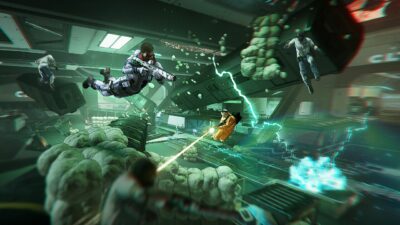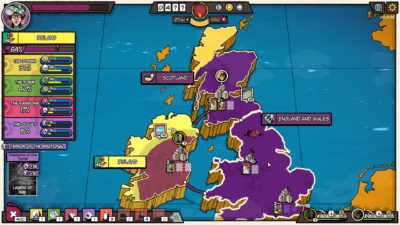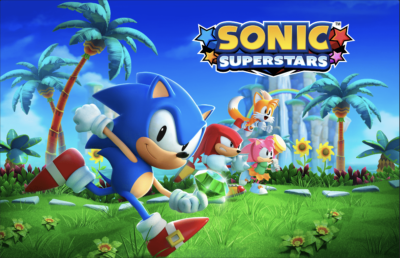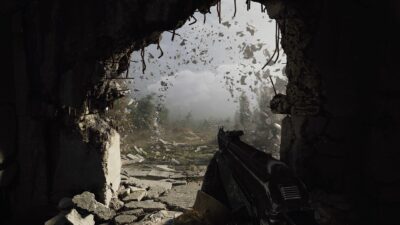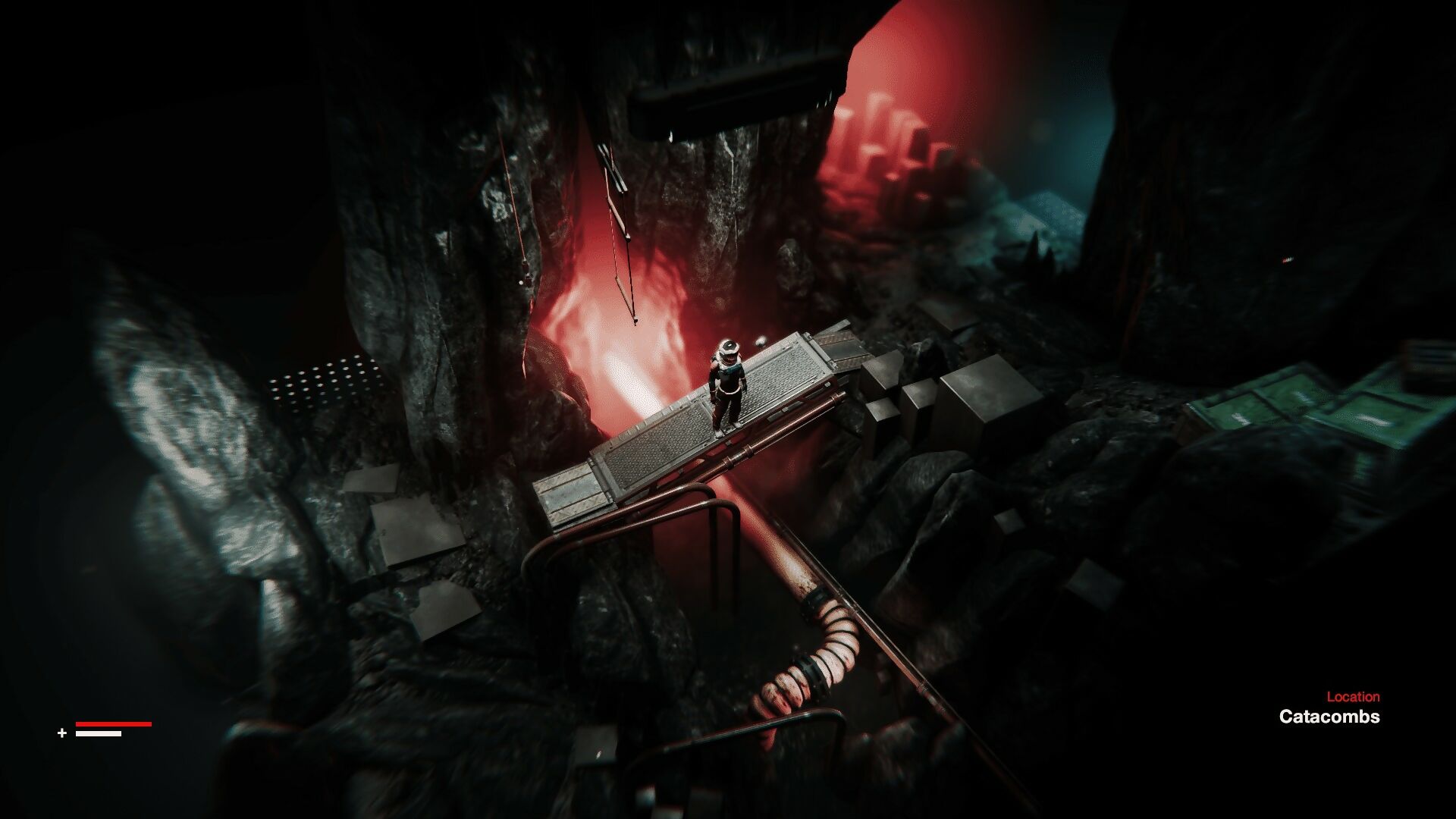
So much of indie game development is about doing less with more. Case in point: Nascent Prophecy, a darkly atmospheric sci-fi adventure that looks so polished and so detailed, you’d hardly think it was the product of just one designer. With cunning use of sound and lighting, though, British graphic designer and developer Jon Caplin has constructed a tense, claustrophobic off-world thriller: you control Sam, who wakes up on the muddy bank of an alien planet with no idea why the nearby outpost, called Spire, has suddenly gone into lockdown. Investigating further, Sam realises something’s gone awry: there are dead bodies strewn around, a malfunctioning robot on the war-path, while doors into the base are sealed shut.
Drawing on isometric adventure games from the past – most prominently, Amiga-era classic, Cadaver – Nascent Prophecy requires you to scour the landscape for items, and figure out how each will help you progress. The choice of perspective is a brilliant one: through a clever use of lighting and depth-of-field effects, Caplin creates the illusion of a much bigger, dangerous alien world. Again, he found ways of doing less with more here: by taking pre-existing 3D models and ‘kitbashing’ them into new forms, he was able to quickly build-up his alien planet and eerily still base. “I was thinking back to the kitbashing videos I’d been watching that involve taking seemingly random pieces of model kits and sticking them together to create new models,” Caplin tells us. “I took the same approach in Nascent Prophecy. Using bought and downloaded models, I trimmed, edited, merged, and retextured them to create new models, which allowed me to rapidly build-up environments and scenes. By doing this and seeing results quickly, it also helps to develop story arcs and think up puzzle designs.”

The writings of Philip K. Dick and the unique art of futurist Syd Mead all went into Nascent Prophecy in some form, Caplin tells us.
Caplin’s interest in physical model kits also informed the use of focus: exploring each of Nascent Prophecy’s discrete areas provides the feeling of looking down on a tiny diorama. “As a kid, I used to make Airfix models, and more recently I found myself watching YouTube tutorial videos on painting miniatures and kit building,” he says. “The depth of field serves to heighten that sense of miniature models.”
Far from making the game’s world feel implausible, the depth-of-field effect adds to its claustrophobia – of a dangerous planet where you’re never sure what the next screen will bring. Caplin’s use of ambient sound adds to this – it’s a tactic that he says helps the player “fill in the gaps” without stretching the game’s budget. “Sound is so important in an experience, and something I love,” says Caplin. “At the beginning of the game you start in an area that has a muddy shore and reeds. Creating the VFX of the water was out of my reach, but by adding the sound of the water bubbling and wind blowing with sand being kicked up, your brain fills in all the gaps. The audio is working as hard as the visuals, in some cases, more so.”
Back to the Future
Not that Nascent Prophecy was always an isometric game, or even a sci-fi story: early on in its development, the project began as a free-roaming adventure, with a warrior in 18th-century garb exploring a craggy desert environment. That desert soon became an alien planet, and when Caplin hit a “slump” with his over-the-shoulder camera viewpoint, he moved over to an isometric perspective he’d already experimented with in an earlier project. “Changing the camera and slicing up the open world into rooms, there was a eureka moment. Nascent Prophecy was born, with its new room-by-room challenges and inventory.”
Caplin’s background as a graphic designer, as well as a game developer, allowed him to come up with a consistent art direction and tone for Nascent Prophecy, while using Unity as a platform allowed him to come up with atmospheric lighting “straight out of the box”. “Lighting not only sets mood – but it also covers up any modelling misgivings,” Caplin jokes. “I use a classic three-point lighting setup, and these core lights are fixed to a lighting rig that frames each room as you move between them. Other tools also allow this rig to be offset to help create particular looks if rooms require it.”

To keep costs low, it’s Caplin’s voice you’ll hear through the game’s first chapter.
Caplin spent over a year creating Nascent Prophecy’s first chapter, which you can download for free right now. But with the important groundwork all done, he says the rest of the saga, which will unfold over four to five chapters, released episodically, will be completed far more quickly. This is just as well because, like the game’s luckless protagonist, we’re keen to find out what dreadful secrets are lurking inside the Spire. “It’s now down to filling in all the details from gameplay, puzzle design, and narrative,” Caplin says. “The first chapter starts on the outskirts of Spire’s complex and tasks you with getting back in as the outpost has mysteriously gone into lockdown. Finding the answer to why this has happened will become the driving narrative. Who were they keeping out? Or in, even?”
Points of View
One of the most pleasing things about Nascent Prophecy is the way it uses its isometric perspective to create intimate, self-contained areas – a design idea common in the eighties and nineties, but seen less often today, as Caplin himself notes. “I think Supergiant games are championing an isometric (perspective) in their games – most recently in the excellent Hades – but I think the big difference is older games would be very ‘room’-based,” he says. “They would have black space surrounding and hugging the scene so that your focus was very much on what was there in front of you. Today’s games that use an isometric view generally exploit full screen, full bleed, and gameplay areas that scroll with the player, which in turn gives you a very different feel.”


